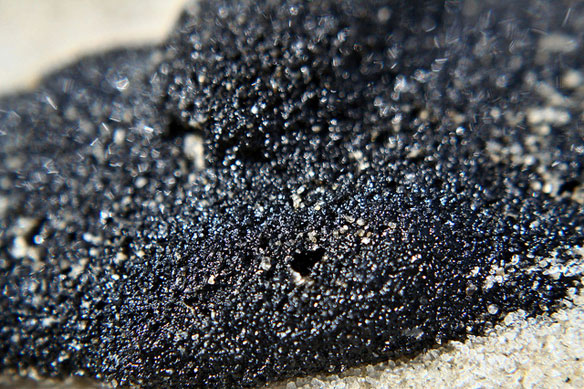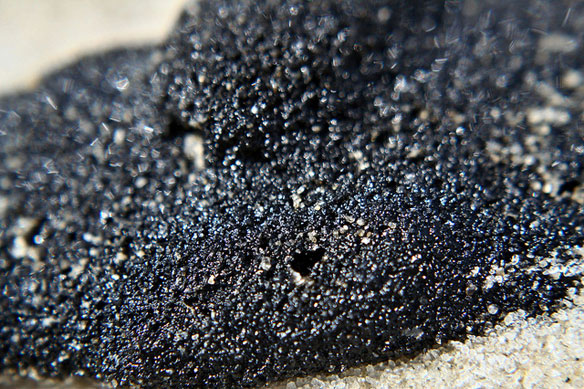
A close-up of a tar ball found on the beach in Dauphin Island, Alabama. Caption and photo source: NOAA
Excerpts;
Tar balls washed onto Gulf of Mexico beaches by Tropical Storm Lee earlier this month show that oil left over from last year’s BP spill isn’t breaking down as quickly as some scientists thought it would, university researchers said Tuesday.
An Oily Tide Washes In With Gulf Storms, by NRDC
Tar Balls On Alabama Beaches Linked To BP Oil Spill, AP
Burning Oil From BP Spill Emitted Millions Of Ponds Of Black Carbon, Science Daily
As part of its response to the Deepwater Horizon oil spill, the unified federal response team used controlled burns to remove oil from the open water in an effort to minimize impacts to the shoreline and marine and other wildlife. The black smoke that rose from the water’s surface during the controlled burns pumped more than 1 million pounds of black carbon (soot) pollution into the atmosphere, according to a new study published last week by researchers at NOAA and its Cooperative Institute for Research in Environmental Sciences (CIRES) in Boulder, Colo. The new paper has 15 co-authors from NOAA ESRL and CIRES and can be found on the Geophysical Research Letters website.









